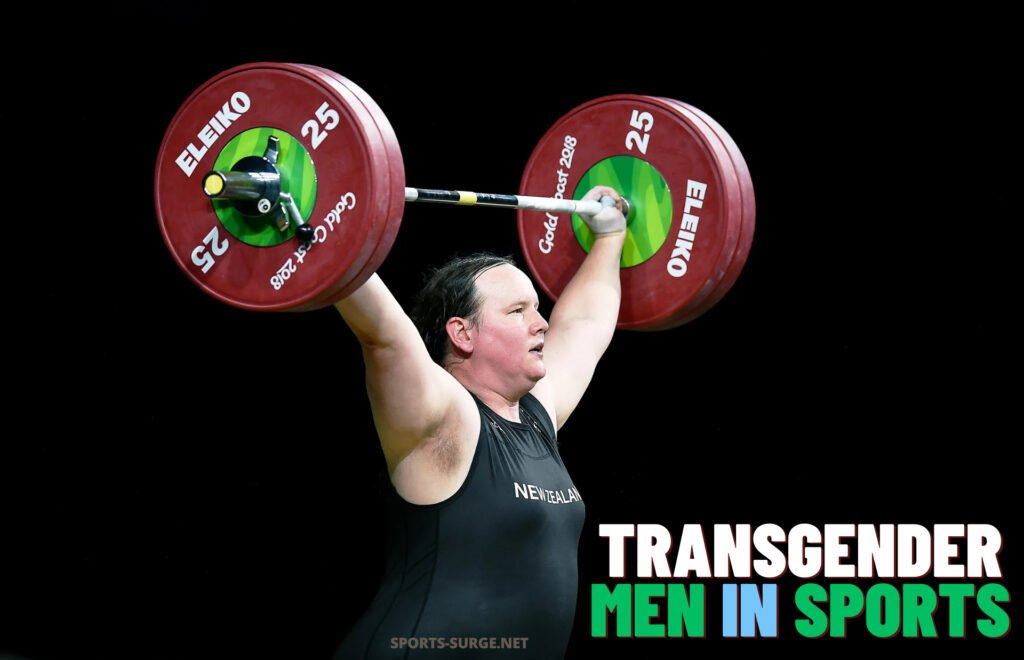The participation of transgender men in sports has become an increasingly prominent topic in recent years, reflecting broader societal discussions about gender identity, inclusivity, and fairness. Transgender men—individuals assigned female at birth who identify and live as men—face unique challenges and opportunities within the athletic arena. This article explores the experiences of trans men in sports, highlighting notable athletes, examining policy developments, and discussing the ongoing debates surrounding their inclusion.
Table of Contents
ToggleUnderstanding Transgender Men in Sports

Transgender men often face complex decisions regarding their participation in sports, particularly concerning whether to compete in men’s or women’s categories. This choice is influenced by factors such as personal comfort, hormone therapy status, and existing policies of athletic organizations. For instance, some transgender men may opt to compete in women’s divisions if they have not undergone hormone therapy, while others may choose men’s divisions, aligning with their gender identity.
Notable Transgender Male Athletes
Several transgender male athletes have made significant strides in their respective sports, serving as trailblazers and advocates for inclusivity:
- Chris Mosier: An American duathlete and triathlete, Mosier made history in 2015 as the first known transgender athlete to earn a spot on a U.S. national team different from their sex assigned at birth. His advocacy led to the International Olympic Committee (IOC) adopting more inclusive guidelines for transgender athletes in 2016.
- Mack Beggs: A high school wrestler from Texas, Beggs garnered national attention when he won the Texas girls’ state wrestling championship in 2017 and 2018. Due to state regulations, he was required to compete in the girls’ division despite identifying as male and undergoing hormone therapy.
- Iszac Henig: A swimmer at Yale University, Henig came out as a trans man in 2021. He chose to continue competing on the women’s team without undergoing hormone therapy to maintain eligibility, achieving All-America status at the NCAA Division I Championship.
- Jay Riccomini: A freestyle skier, Riccomini publicly came out as a gay transgender man in 2021. He has since achieved significant success, including a third-place finish in a World Cup competition and promotion to the U.S. Freeski pro team.
Policy Developments and Challenges

The inclusion of transgender athletes in sports has prompted various policy responses aimed at balancing inclusivity with fair competition:
- International Olympic Committee (IOC): In 2016, the IOC updated its guidelines, allowing transgender men to compete in men’s events without restriction and permitting transgender women to compete in women’s events after demonstrating suppressed testosterone levels for at least one year. These guidelines have been subject to ongoing review and debate.
- National Collegiate Athletic Association (NCAA): The NCAA has implemented policies to accommodate transgender athletes, including allowing transgender men undergoing hormone therapy to compete on men’s teams. In 2022, the NCAA updated its policy to require documented testosterone levels at specific intervals for transgender athletes, aligning with national governing body standards.
- State Legislation: In the United States, numerous states have enacted laws restricting transgender athletes’ participation in sports consistent with their gender identity, often focusing on transgender women and girls. These laws have led to legal challenges and significant public debate.
Debates Surrounding Inclusion

The participation of transgender men in sports intersects with complex discussions about fairness, safety, and inclusivity:
- Competitive Advantage: Some argue that transgender men who have undergone testosterone therapy may possess physical advantages over cisgender male competitors. However, research indicates that while testosterone can increase muscle mass and strength, the extent of any competitive advantage varies and is influenced by numerous factors.
- Safety Concerns: In contact sports, concerns have been raised about the safety of transgender men competing against cisgender men, particularly if they have not undergone hormone therapy. Policies often address these concerns by establishing criteria for participation based on hormone levels and other medical considerations.
- Inclusivity vs. Fairness: Balancing the inclusion of transgender athletes with the principle of fair competition remains a contentious issue. Advocates emphasize the importance of providing equal opportunities for all athletes, while opponents express concerns about maintaining a level playing field.
Recent Developments
In 2024, Spain’s first all-transgender men’s soccer team, Fenix FC, made its debut in a regional league in Catalonia. The team was formed to provide a safe and accepting environment for transgender men to play soccer, overcoming administrative challenges and societal prejudice. Their participation marks a significant step toward inclusivity in sports.
Conclusion
The experiences of transgender men in sports reflect broader societal shifts toward recognizing and affirming diverse gender identities. While progress has been made in creating more inclusive athletic environments, ongoing dialogue, research, and policy development are essential to address the complex issues at the intersection of gender identity and competitive sports. By fostering understanding and inclusivity, the Trans Men in Sports community can ensure that all athletes have the opportunity to participate and excel.
FAQs about Trans Men in Sports
What policies govern the participation of transgender men in competitive sports?
Policies vary across organizations. For instance, the National Collegiate Athletic Association (NCAA) allows transgender men undergoing hormone therapy to compete on men’s teams. However, if they are receiving testosterone, they must obtain a medical exemption due to its classification as a banned substance.
Do transgender men have a competitive advantage in men’s sports?
The impact of hormone therapy, such as testosterone treatment, can vary among individuals. While testosterone may increase muscle mass and strength, the extent of any competitive advantage is influenced by numerous factors, including training and genetics.
Are transgender men required to undergo sex verification testing?
Sex verification testing has historically focused on female athletes. Transgender men are generally not subjected to such testing unless specific policies of a sporting body require it.
Can transgender men compete in women’s sports?
Transgender men who have not undergone hormone therapy may be eligible to compete in women’s sports, depending on the governing body’s policies. However, those undergoing testosterone therapy are typically required to compete in men’s categories due to the performance-enhancing nature of testosterone.
How do anti-doping regulations affect transgender men athletes?
Testosterone is prohibited in sports at all times. Transgender men undergoing testosterone therapy must apply for a Therapeutic Use Exemption (TUE) to compete. The testing process is adjusted to respect the athlete’s gender identity.
What support exists for transgender men in sports?
Organizations like the American Civil Liberties Union (ACLU) advocate for the rights of transgender athletes, debunking myths and promoting inclusivity. Additionally, various sports bodies have implemented policies to support transgender athletes’ participation.

